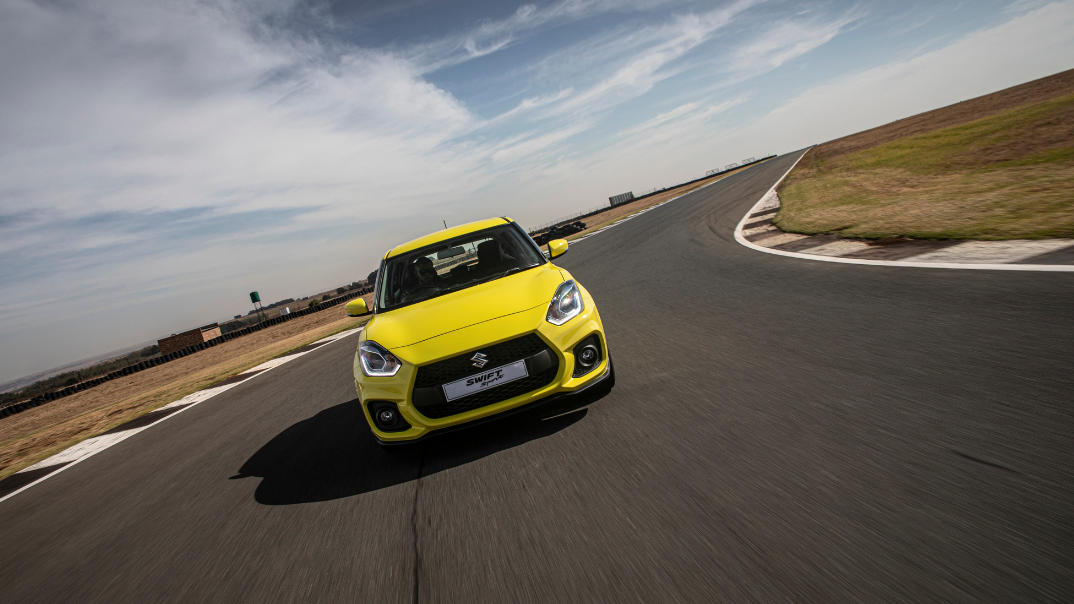 In this episode, Peter gives us a breakdown of how disc brakes work.
In this episode, Peter gives us a breakdown of how disc brakes work.
We take a look at the individual components that make up the disc braking system, the materials used for each component, and how they all work together. We also talk about two common problems related to brakes and how to solve them to ensure vehicle safety. Watch the video now.
If you can’t watch the video, you can read the video transcription below: Edited for clarity and readability
Welcome to Let's Talk Automotive. In this week's episode of How Things Work, we are going to be having a look at Disc Brakes.
We know that most passenger car vehicles these days have, at least on the front brakes, a set of disc brakes. We know we've got some drums on the rear, but we're going to talk about drum brakes in another episode.
What are the basic components of our disc brakes? First, we have our brake pads. Our brake pads are housed in a brake calliper, and then we have our brake disc itself.
Let's start off with the brake pads themselves. The brake pad’s technology has developed in leaps and bounds. In the old days, the compounds that we used to manufacture the braking surface area used to be made out of asbestos. Now, obviously, those days are gone. We're not allowed to use asbestos anymore so designers had to come up with better friction materials to cope with the hard demands of braking. When we talk about the hard demands of braking, it’s important to understand that all of the kinetic energy that exists in your vehicle when it's moving is dissipated in the form of heat through your brake pads and brake discs. These two put up with an enormous amount of stress and heat, so the materials are critical.
We get three basic types of materials that we use on our brake pads. The first is an organic compound, which by the way, explains why if you've been braking heavily, you can sometimes smell the brakes. That terrible smell is actually the organic material decaying as a result of the heat. The second type that you get is based predominantly on a metallic compound of materials. The different metals that we use, including copper, give the brake pad some nice characteristics.
There are always advantages and disadvantages of either, so most of the brake pads we see these days actually have a compound of the two. So we have organic material, some carbon, and some metallic materials in there. This combination has some really nice characteristics including the brakes being quiet, having the ability to stop a vehicle quickly, as well as longevity.
The second major component is the disc itself, or the rotor, as it's technically known. This can be made up of any number of different materials. On passenger cars, the majority of discs are manufactured out of cast iron, but we can also have these made out of ceramic. Some of our Hypercars initially had ceramic brakes because they can put up with a lot of heat and stress. A lot of our Supercars come out with carbon-ceramic brakes, which have a few better qualities, including being able to brake instantly without having to heat up first. On some race cars, including Formula 1 cars, we see full carbon brakes.
Let's get back to the discs that we see on our passenger cars, which are predominantly made out of cast iron. One of the things that we often pick up on brake discs is the concept of brake shudder. A lot of people think that brake shudder is due to the fact that the disc itself has warped. That's not the case because cast iron physically cannot warp. It is either straight or it's going to break, one of the two.
So what causes brake shudder? Very simply, what we find with brake shudder is that we've had uneven wear along the surface area of the disc. This is caused when we've been braking excessively, building up a lot of heat in the brakes, we come to a stop street or robot and keep our foot on the brake. Remember, all that kinetic energy is being dissipated in the form of heat. There's a huge heat buildup that exists now between the brake pad and the disc. If we've kept our foot on the brake, we create a mass heat sink which gives the disc an opportunity to soften at that point. This leads to uneven wear throughout the disc, which doesn't have to be a lot for brake shudder to occur. In fact, anything more than 0.07 of a millimetre difference in the thickness of the disc may cause brake shudder.
To prevent that, all we have to do is make sure that if we have been braking hard, we give the brakes an opportunity to cool down. We can do this by simply easing off the brakes, or just braking softly for the last half a kilometre or so of driving. If you don't have an opportunity to do that, then take your foot off the brake and put on your handbrake when you come to a stop. This activates the rear brakes, which don’t have anywhere near the amount of heat buildup that we find on our front discs.
Something we sometimes find with disc brakes is that the brakes tend to squeal. There are two major causes of brake squeal. The first is understanding that when a brake pad is activating up against a disc, it vibrates all the time. Most of the time this vibration, in the harmonics/frequency that it creates, is out of our earshot. We don't hear it. Animals might hear it, but luckily we don’t. However, there are a few circumstances that cause the harmonics to come within our hearing range, which we hear in the form of a squeal.
What can we do about that? It depends on what has caused it. First, we can look at whether there’s dust buildup in our calliper because remember that callipers are free-floating devices that move around a bit. If we've got dust build-up, whether it’s brake dust or dust/dirt from the road, this can change the harmonics or frequency of the vibration on the brake pad, which brings it into earshot. The second thing that can cause brake squeal is if the brake pad itself has gotten so hot that the bonding agent starts to discharge, causing a glazing effect on the disc, which changes the frequency of vibration. A way to get rid of that is to give the disc a light skimming.
Another thing we can do is make sure that we fit the brake pads correctly. On some brake pads, you’ll see a spring that locks the pad into place. A good technician will generally also pack some copper slip or copper grease on the back of the brake pad itself so that when it seats up against the calliper wall, the pad doesn’t unnecessarily vibrate.
Something you would have noticed on some discs is that it's made up of two rotors. In between the discs, you can see vents which we use to cool the disc. The air is going to come in through a vent, a heat transfer will occur, and then it will be expelled as the disc itself moves. A lot of people confuse the cross-drilling or the slots that we sometimes see on a disc as being the thing that cools the discs, which isn’t actually what those do. You would have noticed that our cross-drilled or slotted discs are predominantly seen on high-performance vehicles.
When the brake pad gets incredibly hot, there is a gaseous discharge that occurs. This rapidly expanding gas actually pushes the disc and the pad away from each other, meaning that no matter how hard you brake, there will be very little contact between the two. This gives us an effect we know as brake fade, which causes very little braking to occur. With the cross-drilled/slotted discs, that gas is allowed to escape and therefore causes the brake pad and the disc to seat properly again, which returns our braking to normal.
A lot of questions we get are around why the callipers in the brake pads are positioned in certain areas on certain vehicles. This is a very interesting topic and there are a number of design reasons why we place the calliper in different positions on the various discs. The main reason is all to do with the auto binding effect we get from the floating calliper.
Let's go back to your school days when you rode a bicycle. You would have noticed that the front brakes on your bicycle were positioned in front of the forks of the bicycle because if you'd put them behind the forks, those brakes would have locked and you would have been flying over the handlebars like Superman. It’s exactly the same effect when it comes to the position of our brake callipers. On 99% of rear-wheel-drive vehicles, the front brakes are where all the braking action takes place. You will notice that the calliper and the pads are situated behind the centre of rotation because when we brake, the brake pads and the calliper are going to lock into position and auto bind. This means we can have a smaller brake pad and a smaller brake calliper, meaning less weight on the front wheels, which aids in the handling of the vehicle.
Unfortunately, it's very difficult to achieve this effect on a front-wheel-drive vehicle, simply because – in addition to a drive shaft – there's a steering arm to consider. The steering arm is normally behind the centre of rotation, which means that we have to position our calliper in the front.
So there are quite a few interesting things to consider in terms of our brakes. Brakes are a very, very important safety feature on our cars. Once again, our suggestion to our viewers out there is not to compromise when it comes to the quality of the items you use to repair your braking system.
That's it for our Disc Brakes episode of How Things Work.
To watch the full episode, visit: https://www.facebook.com/LetsTalkAutomotive/videos/?ref=page_internal
Want to know when the next episode is available? Sign up to get notifications straight into your inbox.

![HOW THINGS WORK: Engine braking [VIDEO]](https://blog.suzukiauto.co.za/hubfs/Swift%20MC%20interior.png)

![How Things Work: Rotary Engines [VIDEO]](https://blog.suzukiauto.co.za/hubfs/Suzuki%20Ciaz%20%20(1).png)